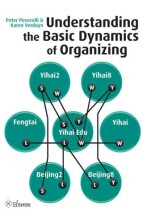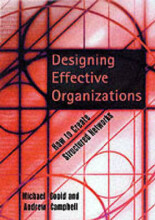Cornelissen: Imagining and rationalizing opportunities: inductive reasoning and the creation and justification of new ventures
16 important questions on Cornelissen: Imagining and rationalizing opportunities: inductive reasoning and the creation and justification of new ventures
Describe the main question of the study of Cornelissen:
Using analogies or metaphors people are verbally referring to other cases and domains of experience. They give structure, allowing entrepreneurs to make sense of puzzling or unfamiliar situations. Define metaphors and analogies: (Cornelissen)
2. Analogies: literal references to cases and observations associated with entrepreneurship, market, or industry contexts, and ventures and business in general. An analogy conjoins cases from the same category of observations. (= concrete)
Analogical and metaphorical reasoning as changing mindsets and generating new ideas. Analogies and metaphors (verbally and cognitively referring to other cases and domains of experiences) can guide thinking, can generate new insights and can create understanding and social acceptance. Explain both construct (Cornelissen).
2. Metaphors refer to figurative, and hence cross-categorical, comparisons where strategies or organizational situations are likened to cultural domain of experience outside a specific business context.
- Higher grades + faster learning
- Never study anything twice
- 100% sure, 100% understanding
Why is framing essential (Cornelissen)?
2. A crucial way of facilitating understanding of novel isntances (such as a strategic change or innovations) involves uses analogical or metaphorical frames that can create or expand categories of understanding in order to incorporate the change.
3. Analogies or metaphors also bring familiarity, aid comprehension and license certain inferences (f.e. war on terror)
> It's a way of communicating
On what does the use of analogies and metaphors depend on? (Cornelissen)
2. Activation of social pressures to demonstrate the predictability and legitimacy of a venture to stakeholders.
Cornelissen argues that creating novel ventures consists of inductive analogical and metaphorical reasoning, which generates a platform for the creation and commercialization of novel ventures and facilitates the comprehension and justification of a venture. Cornelissen argues that such inductive reasoning is shaped by two determinants, which 2?
Explain how Cornelissen sees the sensemaking approach?
Entrepreneurs are likely to rearrange words creatively in the form of analogies/metaphors of speech: this allows them to imagine future opportunities and make these understanable to others.
Which 4 contributions does Cornelissen makes with this study?
2. He develops a process theory of new venture creation that specifies two determinants: the availability and applicability of prior entrepreneurial experience. And the motivation to resolve uncertainty and to gain legitimacy for novel ventures.
3. He combines and reconceptualize the predictions of theory on entrepreneurial cognition and institutional legitimacy in his process theory.
4. The process theory he proposes provides also a methodological contribution: it can be analyze shifts and changes in how entrepreneurs inductively reason about novel ventures.
What is the focus regarding the new ventures of Cornelissen in this study?
The study of new venture creation primarily has been addresses in two related but separated bodies of literature. Explain which 2. (Cornelissen)
2. Institutional theory: located entrepreneurship within a social context and has focused on cultural and symbolic realms of meaning construction around new ventures.
Cornelissen argues that the foci and limitations of both literature traditions are complementary. Explain:
What does sensemaking implies according to Cornelissen?
Cornelissen argues that in absence of directly relevant prior experiences and observations, entrepreneurs will induce metaphors to suggest an opportunity and to construct a basic scenario for the creation and commercialization of a new venture in an unfamiliar industry. Which first proposition suits this?
Cornelissen suggests that entrepreneurs prefer to project inferences that build on a whole set of relations than can be discursively projected to or aligned with a target domain. The retailing domain was also intimately familiar to the founding entrepreneur and executives. Retailing concepts had already been an established part of their vocabulary, while speaking to each other. Which proposition suits this?
According to Cornelissen in the initial stages of a venture, the default induction of argument construction that are metaphorical will be used to describe the basic idea of the venture in the target industry. Which proposition suits this?
Cornelissen has theorized about how inductive reasoning through analogies or metaphors is central not only to how entrepreneurs envision an opportunity for a novel venture but also to the way in which they communicate about that venture so that it can be understood and made acceptable and legitimate in the eyes of key stakeholders. What is highlighted by Cornelissen?
The question on the page originate from the summary of the following study material:
- A unique study and practice tool
- Never study anything twice again
- Get the grades you hope for
- 100% sure, 100% understanding






























